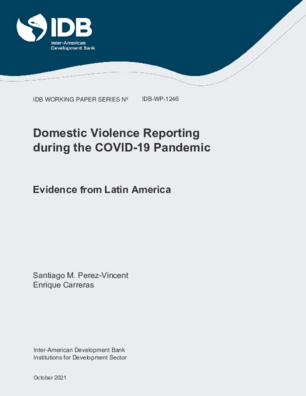Domestic Violence Reporting during the COVID-19 Pandemic: Evidence from Latin America
Date
Oct 2021
This article examines changes in the frequency and characteristics of domestic violence reports after the start of the pandemic and the imposition of mobility restrictions in six Latin American countries. The study uses three types of data sources: calls to domestic violence hotlines (for the City of Buenos Aires in Argentina, Colombia, and Peru); calls to emergency lines (for Ecuador, Lima in Peru, and Costa Rica); and police/legal complaints (for Colombia, Ecuador, and Uruguay). Data through June 2020 shows that the pandemic's impact on domestic violence reports varied significantly across countries, periods, types of violence, and reporting channels. Calls to domestic violence hotlines soared, but calls to emergency lines and police complaints fell (especially in the first weeks of the pandemic). Significantly distinct patterns are observed between reports of psychological and physical violence, and non-cohabitant and cohabitant violence. These patterns are consistent with the pandemic changing the relative incidence of different types of violence and altering the perceived costs of reporting them through alternative channels. Increases in calls to domestic violence hotlines suggest that this channel was best suited to respond to victims' needs during the pandemic. In turn, the drop in legal complaints and calls to comprehensive emergency lines are consistent with an increase in the perceived (relative) cost of using these channels. The findings reveal how the pandemic altered domestic violence victims' demand for institutional help and highlight the relevance of domestic violence hotlines as an accessible and valuable service.




